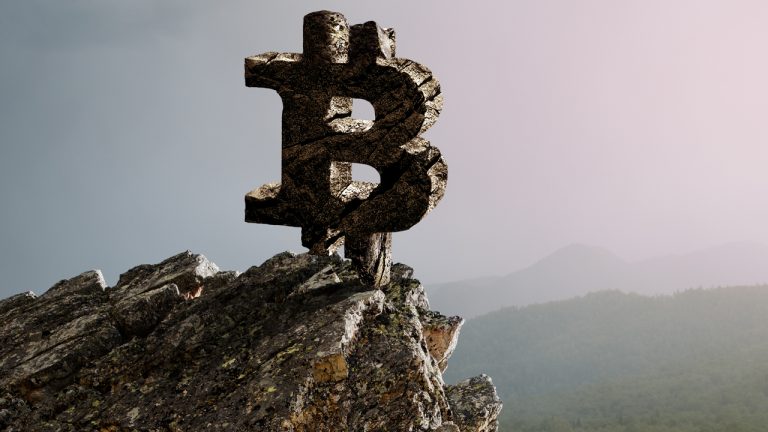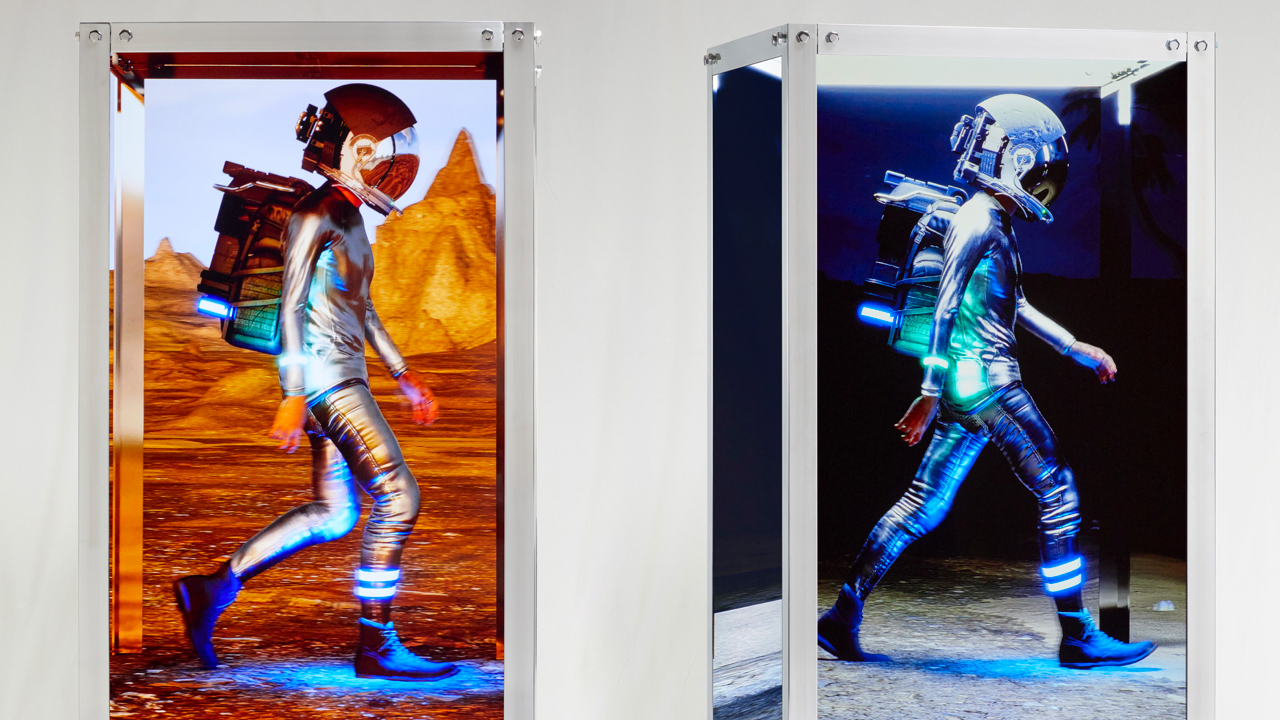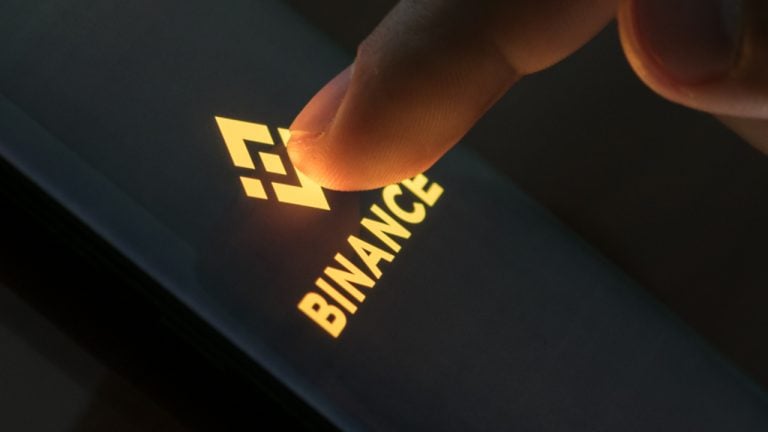 As the number of Bitcoin-based Ordinal inscriptions nears the 300,000 mark, Galaxy Digital’s research team published a report on the subject that says the market size of non-fungible tokens (NFTs) built on Bitcoin could reach $4.5 billion over the next two years. The researchers at Galaxy think that new use cases stemming from the inscription […]
As the number of Bitcoin-based Ordinal inscriptions nears the 300,000 mark, Galaxy Digital’s research team published a report on the subject that says the market size of non-fungible tokens (NFTs) built on Bitcoin could reach $4.5 billion over the next two years. The researchers at Galaxy think that new use cases stemming from the inscription […]
Crypto gifts not only demonstrate love but also a shared interest in the exciting world of cryptocurrency and finance.
For readers looking for unique, meaningful gifts for their valentine this Valentine’s Day, consider giving a cryptocurrency-related gift. Here are nine options:
Give your significant other the gift of choice by giving them a cryptocurrency gift card. They can use it to buy food or any digital asset they want, whether that’s Bitcoin (BTC), Ether (ETH) or a stablecoin like USD Coin (USDC).

Readers can buy virtual real estate in the metaverse, such as in Decentraland or The Sandbox, as a unique, romantic gift. Their significant other can build and customize their own virtual world, and couples can explore new dimensions together.
Related: Why real estate investors are going crazy over virtual lands
Surprise your loved one with a nonfungible token (NFT) artwork they can cherish forever. There are numerous talented artists creating digital art that can be purchased and collected as NFTs.
#artoftheday #artwork #art #AI #nft #NFTCommunity #NFTCollection #openseaartists #ETH #OpenSeaNFT #opensea #EthereumNFT #ValentinesDay2023
— SnarvLeo (@WW_Leopold) February 13, 2023
Again, no idea for valentines? Send NFT!https://t.co/DTxrTnPX6t pic.twitter.com/m6bqeR6zKe
A hardware wallet can be a useful, heartfelt present for the crypto-savvy valentine. Hardware wallets add an extra layer of security for digital assets, protecting users’ cryptocurrency investments from hackers and other cyberattacks.
Related: 1inch launches proprietary hardware wallet as self-custody trend grows
By purchasing a loved one a yield-generating token in the decentralized finance (DeFi) ecosystem, they can receive the gift of passive income. They can keep it in their wallet while keeping track of the investment’s growth.
Virtual concerts and events are becoming more prevalent as the metaverse expands. Readers can get their valentine tickets to a virtual concert in a well-known metaverse space as a memorable, enjoyable date idea.
Readers can express their love for both their valentine and cryptocurrencies by gifting crypto-themed products. For individuals who wish to flaunt their crypto pride, there are numerous options available, including bracelets, pillows, water bottles, mugs, sweatshirts and more.
Market keeps falling on our heads, so rest it here on this comfy pillow.https://t.co/ydkddJUHP3 pic.twitter.com/7OYFG7SlSb
— Cointelegraph (@Cointelegraph) June 17, 2022
A crypto book such as The Little Bitcoin Book can be a thoughtful, educational Valentine’s Day gift for a significant other if they’re interested in learning about cryptocurrency and the world of digital finance.
Just did my best explanation of #Bitcoin ever.
— Ben Justman (@BenJustman) August 20, 2022
A 65 yo woman was 100% with me while I explained the relationship between Nodes and Miners.
She went home to buy Layered Money and The Little Bitcoin Book.
A crypto book can be a terrific method to improve a partner’s awareness of the technology and its potential, whether they are new to the cryptocurrency space or seasoned enthusiasts.
Rent or stream a movie that explores the world of cryptocurrency, such as The Rise and Rise of Bitcoin or Cryptopia: Bitcoin, Blockchains and the Future of the Internet.
Related: Top 5 Bitcoin documentaries to add to your watchlist
Regardless of which gift is given, it is essential to remember that cryptocurrency investments can be highly volatile, and it‘s always critical to conduct thorough research before making any investment decisions.

Randall Crater was ordered to pay back the millions lost by victims of his fraudulent crypto scheme and spend 100 months in jail followed by a three-year supervised release.
Founder of “My Big Coin” Randall Crater has been sentenced to 100 months in prison and ordered to pay over $7.6 million to the victims of his fraudulent scheme.
The U.S. Department of Justice said on Jan. 31 that Crater was sentenced by United States District Court Judge Denise Casper in Massachusetts.
The sentence comes after Crater was convicted by a federal jury on July 21 on four counts of wire fraud, three counts of unlawful monetary transactions and one count of operating an unlicensed money-transmitting business.
Randall Crater, the founder of "My Big Coin," a purported cryptocurrency company, was sentenced today to more than eight years in federal prison for a multi-million dollar fraud scheme uncovered by #FBI Boston and @USPIS_BOS. https://t.co/567NYPndRU pic.twitter.com/a3eKaogij4
— FBI Boston (@FBIBoston) January 31, 2023
My Big Coin was founded by Crater in 2013 and falsely marketed as a cryptocurrency payment service, luring victims between 2014 and 2017.
Crater claimed the coins on My Big Coin were fully functional cryptocurrencies backed by gold and that the platform had a partnership with Mastercard.
Crater also marketed the “My Big Coin Exchange,” advertised as a crypto exchange where the coins could be swapped for U.S. dollars and other fiat currencies.

A significant portion of the $7.6 million obtained by Crater and his marketing team went toward a house, several cars and over $1 million in antiques, artwork and jewelry.
U.S. Attorney Rachael Rollins said in a statement the damage done by Crater inflicted a serious amount of trauma and financial hardship on his victims:
“For nearly four years, Mr. Crater perpetrated a brazen fraud scheme that preyed on investors and customers who put their faith in him and his fake business, resulting in victim losses of over $7.5 million.”
“His lies and deception inflicted real trauma, pain and hardship on the lives of 55 individual victims and their families who funneled their money into bank accounts Mr. Crater controlled and used to finance his extravagant lifestyle,” she added.
Related: 800 victims of ‘massive’ Bitconnect fraud to receive $17M restitution
Even after his conviction, Crater continued to protest his innocence, stating in an Oct. 21 YouTube video that a My Big Coin credit card did in fact exist and claiming that an investor testified under oath to having used the card multiple times.
Legal action against Crater dates back to Sept. 25, 2018, when now-former Judge Rya Zobel of the Massachusetts District Court ruled against a motion to dismiss a case launched by the U.S. Commodity Futures Trading Commission (CFTC).
The Department of Justice officially filed criminal charges against Crater on Feb. 19, 2019.
After Crater’s 100-month tenure behind bars, he will be subject to a supervised release for the following three years.
 While many celebrities have launched non-fungible token (NFT) collections, a number of NFT compilations have featured luminaries who have passed away. Legends such as Jerry Garcia, Kurt Cobain, Muhammad Ali, Elvis, Tupac, and more have been featured in NFT collections. This Saturday, Ethernity and Bruce Lee’s family will be dropping the renowned martial artist’s first […]
While many celebrities have launched non-fungible token (NFT) collections, a number of NFT compilations have featured luminaries who have passed away. Legends such as Jerry Garcia, Kurt Cobain, Muhammad Ali, Elvis, Tupac, and more have been featured in NFT collections. This Saturday, Ethernity and Bruce Lee’s family will be dropping the renowned martial artist’s first […] This year the American artist Michael Winkelmann, otherwise known as Beeple, made history when he sold his non-fungible token (NFT) artwork “Everydays” for $69.3 million on March 11. Beeple’s latest NFT called “Human One” is a life-sized NFT sculpture that sold for $29 million, and the artist will update the NFT during the course of […]
This year the American artist Michael Winkelmann, otherwise known as Beeple, made history when he sold his non-fungible token (NFT) artwork “Everydays” for $69.3 million on March 11. Beeple’s latest NFT called “Human One” is a life-sized NFT sculpture that sold for $29 million, and the artist will update the NFT during the course of […] Till Lindemann, lead singer of the German metal band Rammstein, has angered Russia’s renowned Hermitage Museum with a crypto initiative. The musician seeks over a hundred thousand euros for an NFT collection containing footage and imagery shot in the cultural institution. The tokens have been created without its authorization. German Singer Till Lindemann Sells NFTs […]
Till Lindemann, lead singer of the German metal band Rammstein, has angered Russia’s renowned Hermitage Museum with a crypto initiative. The musician seeks over a hundred thousand euros for an NFT collection containing footage and imagery shot in the cultural institution. The tokens have been created without its authorization. German Singer Till Lindemann Sells NFTs […] While non-fungible token (NFT) collectibles have been all the rage, a few projects have been developing the concept of fractionalized NFTs so investors without deep pockets can purchase shares of an expensive collectible. On Thursday, the firm Otis revealed that people can invest in an NFT created by the world-famous Canadian musician and record producer […]
While non-fungible token (NFT) collectibles have been all the rage, a few projects have been developing the concept of fractionalized NFTs so investors without deep pockets can purchase shares of an expensive collectible. On Thursday, the firm Otis revealed that people can invest in an NFT created by the world-famous Canadian musician and record producer […]
Swiss digital asset bank Sygnum is issuing NFTs representing fractionalized ownership in a Picasso painting.
Digital asset-focused Swiss Bank, Sygnum, has teamed up with art investment firm Artemundi to offer fractionalized ownership shares in a Pablo Picasso painting for $6,000 each.
Shares representing ownership over $3.68 million Picasso painting, “Fillette au béret,” will be tokenized and issued via blockchain technology, allowing a wide variety of investors to gain exposure to the artwork.
The nonfungible tokens (NFTs) can be exclusively purchased by sophisticated and institutional investors through Sygnum Bank, with secondary trade set to take place on SygnEx — the bank’s digital asset trading platform.
Trades will be settled in Swiss Francs (CHF) using Sygnum’s native CHF stablecoin, DCHF. Fractionalized ownership over the painting will be recognized by Swiss law.
The 1964 painting depicts a beret-capped child in brightly coloured clothes, and was last sold for $2.48 million in 2016. The physical painting will not be sold, with the artwork slated to remain at a high-security facility when it is not being loaned to museums for exhibition.
Artemundi co-owner, Javier Lumbreras, emphasized the revolutionary utility offered by fractionalized ownership through NFTs stating:
“Artistic, cultural objects of universal appeal, once reserved for an elite group of collectors or the museums, can now be safely and directly owned without the burden of high entry barriers.”
“The art market is absurdly opaque and inefficient, but these traits will soon be relics of a bygone age," he added.
Sygnum is not the first company looking to tokenize the work of Picasso.
In June, Soethby’s auction house announced it had teamed up with Mira Imaging with plans to auction Picasso’s work “Le peintre et son modèle” alongside an Ethereum-based non-fungible token created by scanning “every micron” of the painting’s surface to create a “unique encrypted signature” representing the work.
Using a Looking Glass scanner, the NFT could be scanned to confirm the authenticity of the work. However, the NFT offering was scrapped by Sotehby’s, with the painting selling for $3.12 million without an nonfungible counterpart.
Related: Winner spends a fortune in crypto on Sotheby’s diamond auction
Last month also saw the launch of “The Burned Picasso” project from artist collective, Unique.One Community.
After displaying a Picasso sketch at a gallery in Denver, an NFT representing the artwork was minted at the end of the June, with the picture’s physical form getting incinerated.
We burned a Picasso and turned it into an NFT...
— The Burned Picasso (@burnedpicasso) July 15, 2021
Watch https://t.co/zyMZyjdVC8
The NFT auction will be live for the next two weeks, with a starting price set at 0.25 ETH (roughly $500). The auction winner will also receive the framed burnt remnants of original artwork.
In 2018, John McAfee teamed up with DLT platform Maecenas and crypto exchange Ethershift to auction an ERC-721 token representing ownership over a Picasso artwork.

 The Hermitage Museum in Saint Petersburg is considering issuing NFTs for works of art from its rich collection and is holding talks with Binance on the matter. The museum’s management expects the tokens to bring extra funding, provided Russian authorities exempt NFTs from current digital assets regulations. Hermitage Museum in Talks With Binance for Artwork […]
The Hermitage Museum in Saint Petersburg is considering issuing NFTs for works of art from its rich collection and is holding talks with Binance on the matter. The museum’s management expects the tokens to bring extra funding, provided Russian authorities exempt NFTs from current digital assets regulations. Hermitage Museum in Talks With Binance for Artwork […] Cryptocurrency exchange Binance launched its NFT marketplace on Thursday. The platform allows users, including artists, creators, and crypto enthusiasts, to mint and trade non-fungible tokens (NFTs). It employs Binance’s blockchain infrastructure and features various forms of digital artwork and collectibles. NFT Collection Brings Together Celebrated Artists in a ‘Genesis’ Auction The long-awaited Binance NFT Marketplace […]
Cryptocurrency exchange Binance launched its NFT marketplace on Thursday. The platform allows users, including artists, creators, and crypto enthusiasts, to mint and trade non-fungible tokens (NFTs). It employs Binance’s blockchain infrastructure and features various forms of digital artwork and collectibles. NFT Collection Brings Together Celebrated Artists in a ‘Genesis’ Auction The long-awaited Binance NFT Marketplace […]